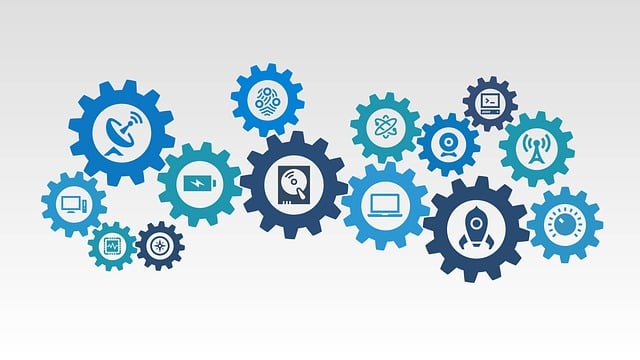The Rise of Edge Computing: Decentralizing Data Processing


Are you tired of slow and unreliable internet connections? Do you find yourself frustrated by the latency issues that hinder your online experiences? Well, get ready to be amazed because there’s a revolutionary solution on the horizon: edge computing. In this article, we will explore the rise of edge computing and how it is decentralizing data processing to transform the way we interact with technology.
Picture this: you’re streaming your favorite TV show on your smart TV, but suddenly, the video starts buffering, ruining your binge-watching session. This frustrating experience is often caused by the distance between your device and the central data processing centers, also known as the cloud. But with edge computing, things are about to change.
Edge computing brings data processing closer to the source, eliminating the need for data to travel long distances. Instead of relying solely on centralized servers, edge computing utilizes localized infrastructure, commonly found in close proximity to users. By distributing computational power to the edge of the network, we can reduce latency and enhance performance.
Think of edge computing as a network of mini-data centers strategically placed throughout various locations. These data centers act as processing hubs, enabling faster response times and improved reliability. They bring the processing power right to the edge of your network, ensuring that data-intensive tasks can be executed swiftly and efficiently.
The applications of edge computing are vast and varied. From autonomous vehicles that require split-second decision-making to remote healthcare services that demand real-time monitoring, edge computing is revolutionizing industries across the board. It enables rapid data analysis, empowers time-sensitive applications, and even enhances security by keeping sensitive information closer to the source.
So, how does edge computing work? Imagine a bustling city with multiple neighborhoods. Each neighborhood represents an edge location equipped with computing resources. Instead of sending all data to a central server located far away, edge computing allows data to be processed within the neighborhood itself. This reduces the burden on the network and delivers faster results.
The rise of edge computing is transforming the way we process data. By decentralizing data processing and bringing it closer to users, edge computing revolutionizes our digital experiences. With reduced latency, enhanced performance, and improved reliability, this innovative approach paves the way for a new era of technology. So get ready to embrace the power of edge computing and enjoy seamless, lightning-fast interactions with your digital world.
Edge Computing Emerges as the Game-Changer: Revolutionizing Data Processing
Imagine a world where data processing is faster than ever before, where latency becomes a thing of the past, and where devices seamlessly connect and communicate with each other in real-time. This is no longer a distant dream but a reality with the emergence of edge computing. In this article, we will explore how edge computing is revolutionizing data processing and transforming the technological landscape.
So, what exactly is edge computing? In simple terms, it refers to the decentralized processing of data closer to its source or “at the edge” of the network, rather than relying solely on centralized cloud servers. By bringing computation and storage capabilities closer to where the data is generated, edge computing significantly reduces latency, improves response times, and enhances overall system performance.
Think of it this way: if cloud computing is like sending your data on a long trip to a remote server, edge computing is like having a powerful computer right next to you that can process the data instantly. Whether it’s a self-driving car making split-second decisions on the road or a smart home system responding to your voice commands without delay, edge computing enables these applications to perform with remarkable speed and efficiency.
One of the key advantages of edge computing is its ability to handle massive amounts of data at the source itself. Instead of sending data to the cloud for processing, edge devices can analyze and filter data locally, transmitting only the relevant information to the cloud. This not only reduces bandwidth requirements but also alleviates privacy and security concerns associated with transmitting sensitive data over networks.
Moreover, edge computing brings intelligence and autonomy to devices. By leveraging artificial intelligence and machine learning algorithms, edge devices can make intelligent decisions in real-time, without relying on constant connectivity to the cloud. This opens up a world of possibilities for industries such as healthcare, manufacturing, transportation, and more.
Edge computing is a game-changer that is revolutionizing data processing. It eliminates the limitations of latency, enhances system performance, and enables real-time decision-making at the edge of the network. With its ability to handle massive amounts of data locally and bring intelligence to devices, edge computing is opening up new frontiers in technology. So, get ready to embrace this transformative technology as it shapes our connected future.
Unleashing the Power of Edge Computing: Transforming Data Processing Landscape
Have you ever wondered how data processing has evolved over the years? From traditional centralized systems to cloud computing, the technology landscape continues to push the boundaries. One revolutionary concept that is transforming the way we handle data is edge computing. In this article, we will dive deep into the details of edge computing and explore its potential to unleash a new era of data processing.

So, what exactly is edge computing? Imagine a vast network of interconnected devices, sensors, and machines spread across various locations. These devices generate an enormous amount of data every second. Instead of sending all this data to a central server or the cloud for processing, edge computing brings the computation closer to where the data is generated, at the “edge” of the network. This means that data processing tasks can be performed locally, reducing latency and improving overall efficiency.
Edge computing holds immense promise in several domains. For instance, in the realm of Internet of Things (IoT), where countless smart devices are connected, data needs to be processed in real-time. With edge computing, the data can be analyzed and acted upon instantly, allowing for faster response times and more efficient decision-making. Think of autonomous vehicles that rely on split-second decisions based on sensor data. Edge computing enables these vehicles to process data locally, ensuring rapid response without having to depend solely on cloud connectivity.
Moreover, edge computing offers enhanced data privacy and security. Since data is processed locally, sensitive information can remain within a secure environment rather than being transmitted to distant servers. This reduces the risk of data breaches and unauthorized access. Additionally, edge computing minimizes reliance on bandwidth-intensive connections, which can be particularly beneficial in remote areas with limited connectivity.
The potential applications of edge computing are vast, ranging from smart cities and industrial automation to healthcare and retail. Picture a scenario where a smart city relies on real-time data analysis to optimize traffic flow, manage energy consumption, and enhance security. Edge computing enables these tasks to be performed efficiently, ensuring a seamless and responsive urban environment.

Edge computing represents a paradigm shift in data processing. By bringing computation closer to the edge of the network, it offers faster response times, improved security, and enhanced privacy. With its potential to revolutionize various sectors, edge computing is poised to unleash a new era of data processing. Exciting times lie ahead as we continue to unlock the power of edge computing and shape the future of technology.
From Cloud to Edge: How Edge Computing is Reshaping Data Processing
Introduction:
Have you ever wondered how data is processed in today’s digital age? The answer lies beyond the confines of traditional cloud computing, as a new paradigm known as edge computing emerges. In this article, we’ll delve into the fascinating world of edge computing and explore how it is reshaping the way data is processed. So, fasten your seatbelts and get ready to embark on an exciting journey!
The Rise of Edge Computing:
In the vast landscape of technology, where speed and efficiency are paramount, edge computing has emerged as a game-changer. Unlike conventional cloud computing, which relies on centralized servers located in data centers, edge computing brings computation closer to the source of data generation. It harnesses the power of local devices, such as routers, switches, and even Internet of Things (IoT) devices, to process data at or near its point of origin.
Benefits of Edge Computing:
Edge computing offers a myriad of benefits that make it an enticing choice for various industries. One of its key advantages is reduced latency. By processing data locally instead of sending it to a distant cloud server, edge computing significantly reduces the time it takes for data to travel back and forth. This is crucial for applications requiring real-time responses, like autonomous vehicles or remote healthcare monitoring.
Moreover, edge computing enhances data security and privacy. Since sensitive data is processed locally, it minimizes the risks associated with transmitting data over networks. Additionally, by decentralizing data processing, edge computing helps alleviate the strain on network bandwidth, resulting in faster and more reliable performance.
Use Cases of Edge Computing:
The applications of edge computing span across diverse domains. For instance, in the realm of smart cities, edge computing enables efficient management of traffic flow and optimization of public services. Similarly, in the industrial sector, edge computing empowers real-time analytics for predictive maintenance, enhancing productivity and minimizing downtime.
Furthermore, edge computing plays a pivotal role in the field of healthcare. It enables quick analysis of medical data from wearable devices, ensuring timely interventions and personalized patient care. In the entertainment industry, edge computing facilitates seamless streaming experiences by caching content closer to the end-users, reducing buffering time and enhancing user satisfaction.

Conclusion:
As we bid adieu to the era of centralized cloud computing, the emergence of edge computing marks a paradigm shift in data processing. With its ability to reduce latency, enhance security, and cater to real-time applications, edge computing is revolutionizing numerous industries. So, keep an eye on this transformative trend as it continues to reshape the digital landscape. Exciting times lie ahead!
Decentralization Takes Center Stage: The Growing Influence of Edge Computing
When it comes to the digital landscape, decentralization has emerged as a leading force, transforming the way we process and store data. One of the key players in this paradigm shift is edge computing. In this article, we will explore the fascinating world of edge computing and its growing influence on our interconnected lives.
So, what exactly is edge computing? Imagine a vast network of interconnected devices, generating an enormous amount of data every second. Traditionally, this data would be sent to a centralized server for processing and analysis. However, edge computing flips the script by bringing the processing power closer to the source of data generation. It utilizes small, localized data centers or devices at the edge of the network, allowing for faster processing speeds and reduced latency.
The rise of edge computing has been fueled by the exponential growth of the Internet of Things (IoT). With billions of IoT devices collecting and transmitting data, traditional cloud-based systems face challenges in terms of bandwidth limitations and latency. Here’s where edge computing steps in, offering a distributed infrastructure that brings computation closer to the devices themselves.
This revolutionary approach brings numerous advantages. Firstly, edge computing enables real-time decision-making. By processing data at the edge, critical insights can be extracted instantly, enhancing response times and optimizing operational efficiency. For industries like autonomous vehicles, healthcare, and manufacturing, this means reduced latency and improved safety.
Secondly, edge computing enhances data security and privacy. Since sensitive data is processed locally, it reduces the risk of data breaches during transmission to centralized servers. This aspect holds great importance in sectors dealing with personal information, such as finance and healthcare.
Moreover, edge computing offers greater scalability and cost efficiency. By distributing the computing load across multiple edge devices, it reduces the strain on centralized servers and enables seamless scalability as demand fluctuates. This allows organizations to optimize their resources and avoid unnecessary expenses.

Edge computing has emerged as a game-changer in the digital landscape. Its decentralized approach brings faster processing speeds, enhanced security, and scalability, propelling us into a new era of data management. With the exponential growth of IoT devices, edge computing’s influence is set to expand even further, revolutionizing industries and transforming the way we harness the power of data.




